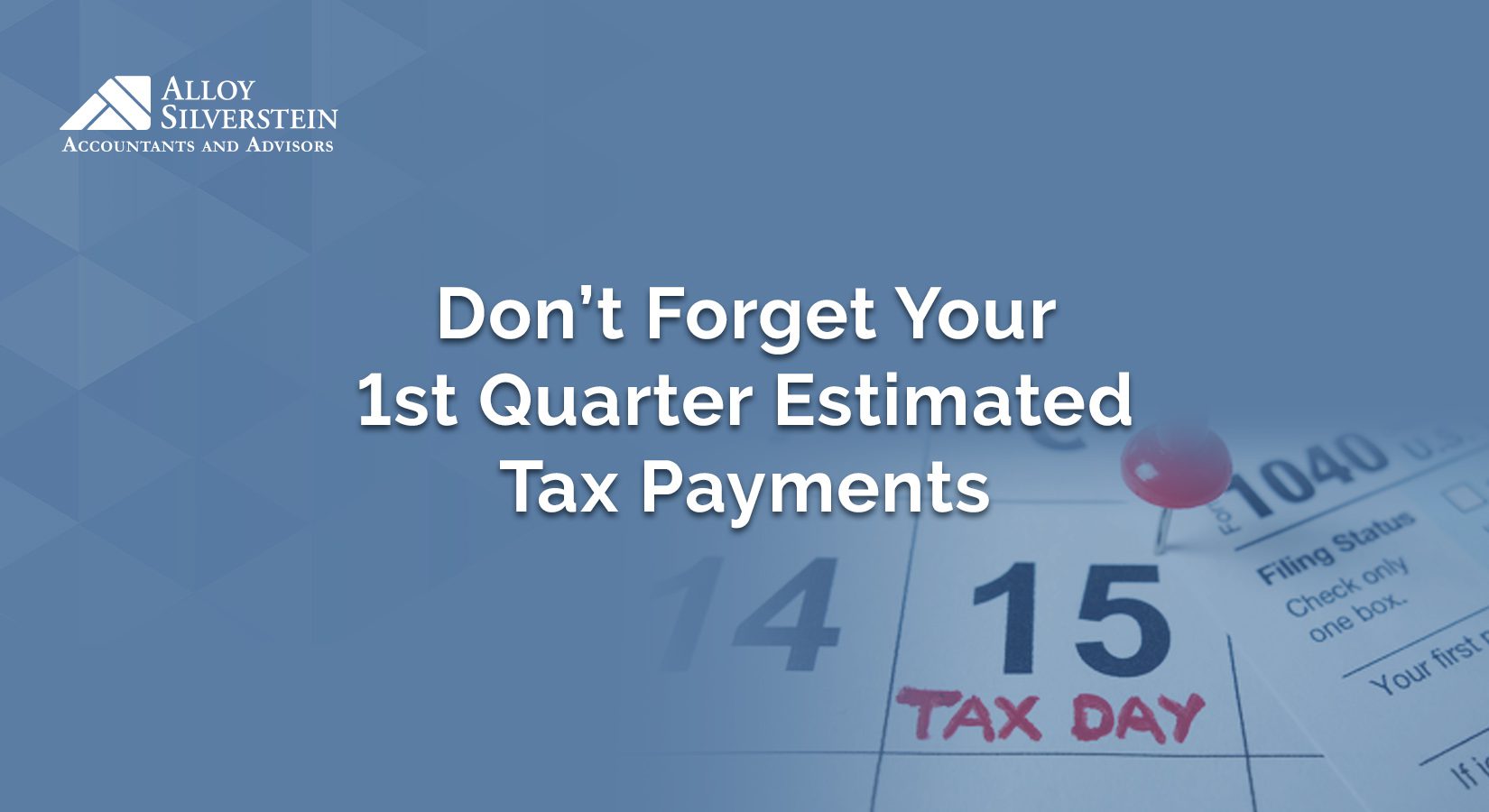Now is the time to pay your taxes AND make your estimated tax payment.
Both your individual tax return AND first quarter estimated tax payment are due April 15 this year. If you had to pay a large tax bill this year, you may be required to file and pay quarterly estimated taxes for the rest of 2024. Here is what you need to know.
The estimated tax payment rule
You are required to withhold or prepay throughout the 2024 tax year at least 90 percent of your 2024 total tax bill, or 100 percent of your 2023 federal tax bill.* A quick look at your 2023 tax return and a projection of your 2024 tax obligation can help determine if a quarterly payment might be necessary in addition to what is being withheld from any paychecks.
Estimated Payments: Things to consider
- Underpayment penalty. If you do not have proper tax withholdings throughout the year, you could be subject to an underpayment penalty. A quick payment at the end of the year may not be enough to avoid the penalty.
- W-2 withholdings have special treatment. A W-2 withholding payment can be made at any time during the year and be treated as if it was made throughout the year. If you do not have enough to pay the estimated quarterly payment now, you may be able to adjust your W-2 wage withholdings to make up the difference.
- Self-employed. In addition to paying income taxes, self-employed workers must also pay Social Security and Medicare taxes. Creating and funding a savings account for this purpose can help avoid the cash flow hit each quarter to pay your estimated taxes.
- Use your refund. An alternative option to pay your first quarter estimated tax is to apply some or all of your tax refund.
- Pay more in the first quarter. By paying a little more than necessary in the first quarter, you can be in a position to adjust future estimated tax payments downward later this year if your tax obligation trends lower than you originally thought.
- Not sure if you need to make a quarterly payment? Take a quick look at your tax return to see the amount of tax you paid last year. Divide this amount by the number of paychecks you receive each year and compare to your most recent paycheck. Is enough being withheld from each paycheck? Talk to your employer if you decide you need to adjust your withholdings to cover next year’s tax bill.
Tax planning beyond tax season
Now that your tax return has been filed, you may be wondering how can you better plan for the remainder of 2024 to minimize any surprises come next tax season. Alloy Silverstein’s accountants and advisors are here to help you navigate the complex tax world for individuals and small businesses.
*If your income is more than $150,000 ($75,000 if married filing separate), you must pay 110 percent of your 2023 tax obligation to avoid an underpayment penalty on your 2024 tax return.
Additional Reading:

